Charles d’Agar (1669-1723)
This magnificent large-scale portrait depicts the British court official and noble, Barbara Herbert, Countess of Pembroke (c.1688-1721). She was the second wife of Thomas Herbert, 8th Earl of Pembroke and 5th Earl of Montgomery (c.1656-1733).
Born Barbara Slingsby, she was a daughter of Sir Thomas Slingsby, 2nd Baronet (1636-1688) and Dorothy Cradock (died 1673). Barbara had two brothers: Sir Henry Slingsby, 3rd Baronet (c.1660-1691), and Sir Thomas Slingsby, 4th Baronet (c.1668-1726). The history of the Slingsby family is extensive and deeply rooted in Yorkshire, with their beginnings linked to the village of Slingsby and the manor of Scriven. As a distinguished family from Yorkshire, they played a significant role in both local and national matters, holding various governmental positions and producing notable individuals such as the Royalist Sir Henry Slingsby, whose diary offers valuable perspectives on the English Civil War. The family founded two baronetcies in the 17th century, although both have since either become extinct or dormant.
Our sitter married three times. Firstly, to Sir Richard Mauleverer, 4th Baronet, of Allerton Mauleverer (died 1689). After his death, she married John Arundell, 2nd Baron Arundell of Terrace (1649–1698), of Trerice, Cornwall (died 1698) in 1692. As Lady Arundell, she had a son, Hon. Richard Arundell (1698-1759). Again, she outlived her husband, and wed Thomas Herbert, 8th Earl of Pembroke on 21 September 1708. The couple had one daughter, Lady Barbara (died 1752). In 1718, she became a Lady of the Bedchamber to the Princess of Wales, Caroline of Ansbach, a role that she continued until her death on 6th September 1712. She was interred Salisbury Cathedral, Wiltshire.
Seated in a wooded area, resting one arm on a plinth with a draped curtain, she confidential looks out at the viewer. The countess was a paragon of the wealthy and privileged society that she belonged to and such images exude a sense of status and Augustan decorum, and were highly influential in transmitting these values into the first half of the eighteenth century. An inscription on the portrait identifies the sitter: 'Barbara Daughter to Sir Thomas Slingsby Barnonet, 2nd wife to the Earl of Pembroke & Montgomery”.
The portrait was painted around the time of her marriage to the 8th Earl of Pembroke in 1708 and was perhaps painted to celebrate this important event in her life. It is possible that the portrait was conceived as a companion portrait to that of her husband, as she is inclined to the viewer’s left (her husband would have been inclined to the viewer’s right as per conventions on portraiture at the time). Furthermore, her left-hand gestures toward her pet, and this could signal fidelity.
The portrait is striking in its quality and also in its remarkable state of preservation. The azure pigments used in the blue drapery still appear bright and vivid, some 300 years later – a fact that is quite remarkable considering the volatility of this pigment and how it often appears quite abraded and faded today in works of this age.
A portrait of the sitter (by Kneller) and another (with her daughter, 50x40 inches) were in the collection of the Earl of Pembroke at Wilton House in 1907. And a further portrait, also by D’agar, was sold at Christies 21st November 1980 (lot 87) in The Earl of Guilford’s sale, Waldershare Park.
Presented in a good antique carved frame.
Charles d’Agar was a prolific artist and his graceful portraits are mannered and competent and were in high demand. His female sitters are easily recognised, and were often modelled on terraces beside a plinth and a classical column or curtain, and a woodland with one or two prominent tree trunks in the background.
Born in Paris in 1669, was the son of painter Jacques (Jacob) d'Agar and his wife Marie Picard. As protestants the d’Agar family immigrated to London sometime between 1678 and 1681 by which time Jacques was officially expelled from the French Academy on religious grounds. Father and son both worked in London up to 1684 painting well known individuals such as Charles II’s French mistress, Louise de Keroualle, Duchess of Portsmouth, before moving to Copenhagen c. 1685. This painting was among a group of paintings listed as having been brought with them from England to Denmark that Jacques eventually sold to the King of Denmark in 1702. Jacques worked at the courts of Christian V and Frederick IV until his death there in 1715. Charles returned to London in 1691 and developed a good portrait practice and success as a court portraitist.
After the painter’s death in Leicester Fields, London in May 1723, George Vertue attended the sale of his collection of prints and drawings and reported that D’Agar had been “a good courteous Man. [who] afflicted violently with the Gout & Stone”. He left a widow Susannah and a son who was also a painter, possibly named David.
Provenance:
Christies London sale 12th Feb 1932, Lot 70, “Various properties” as “Sir Godfrey Kneller, Portrait of Barbara, Daughter of Sir Thomas Slingsby, wife of Thomas, Earl of Pembroke and Montgomery, in blue dress, with a dog by her side, 43 x 40 in.”
Measurements:
Height 126cm, Width 119cm framed (Height 49.5”, Width 46.75” framed)


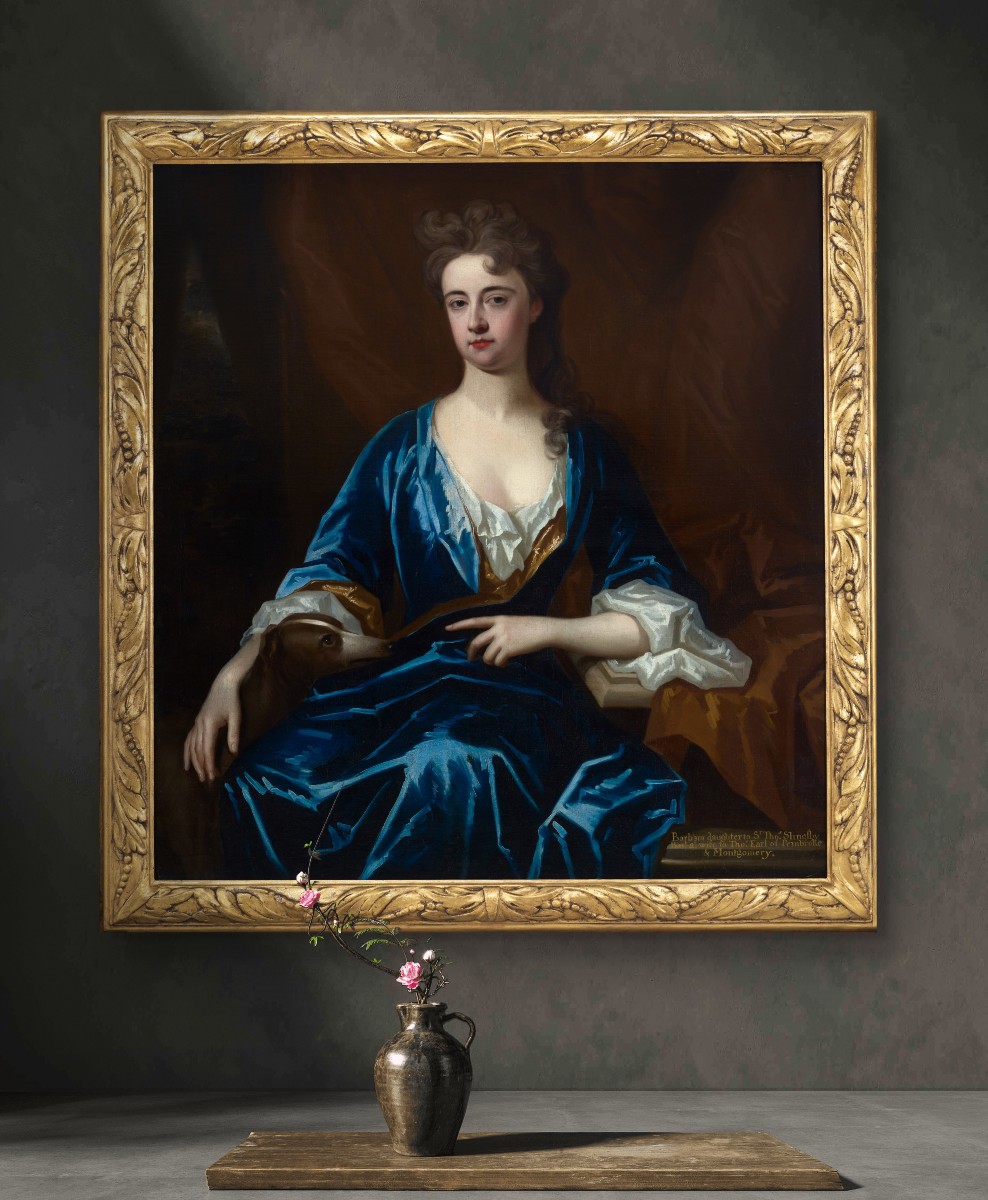
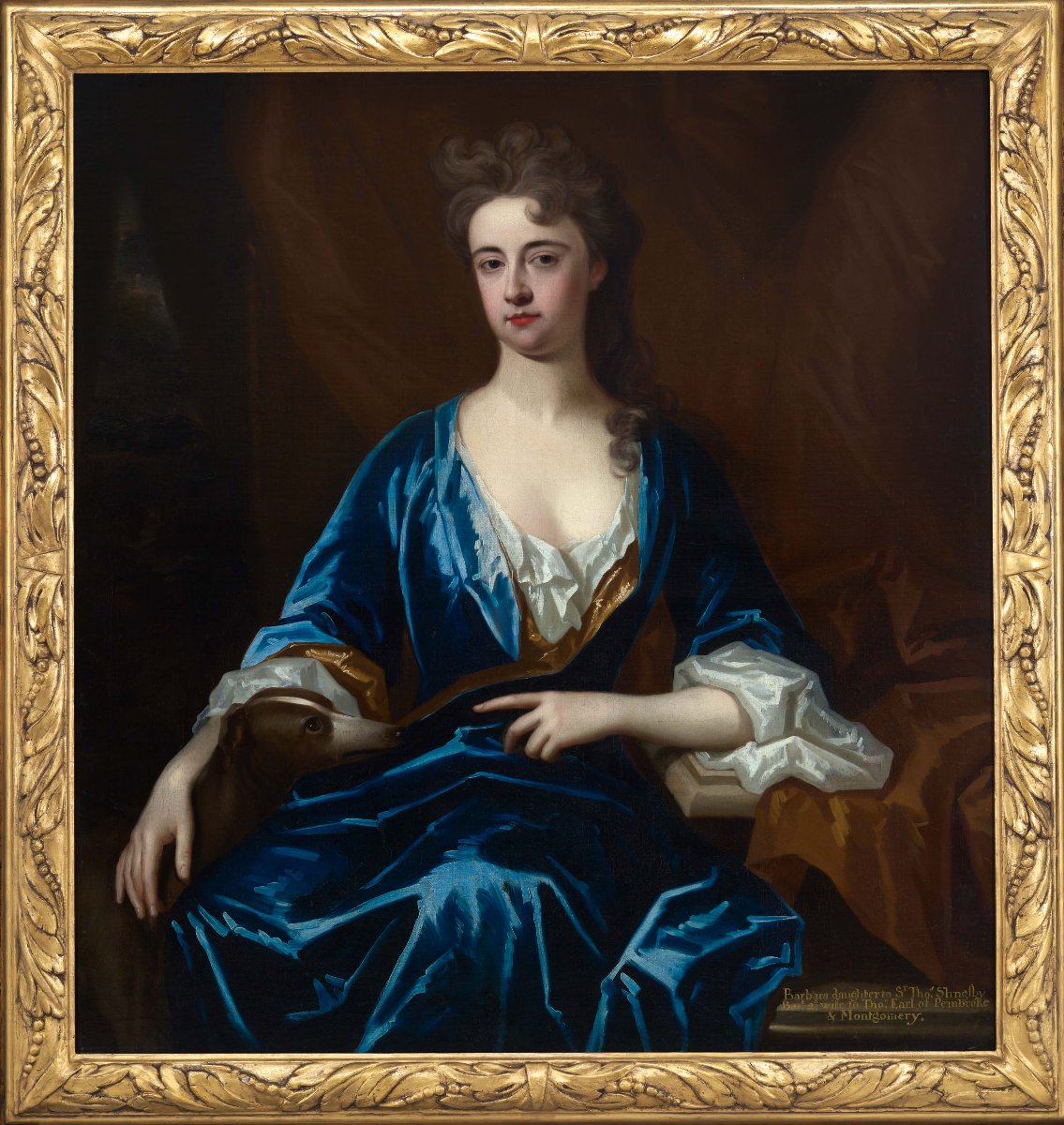
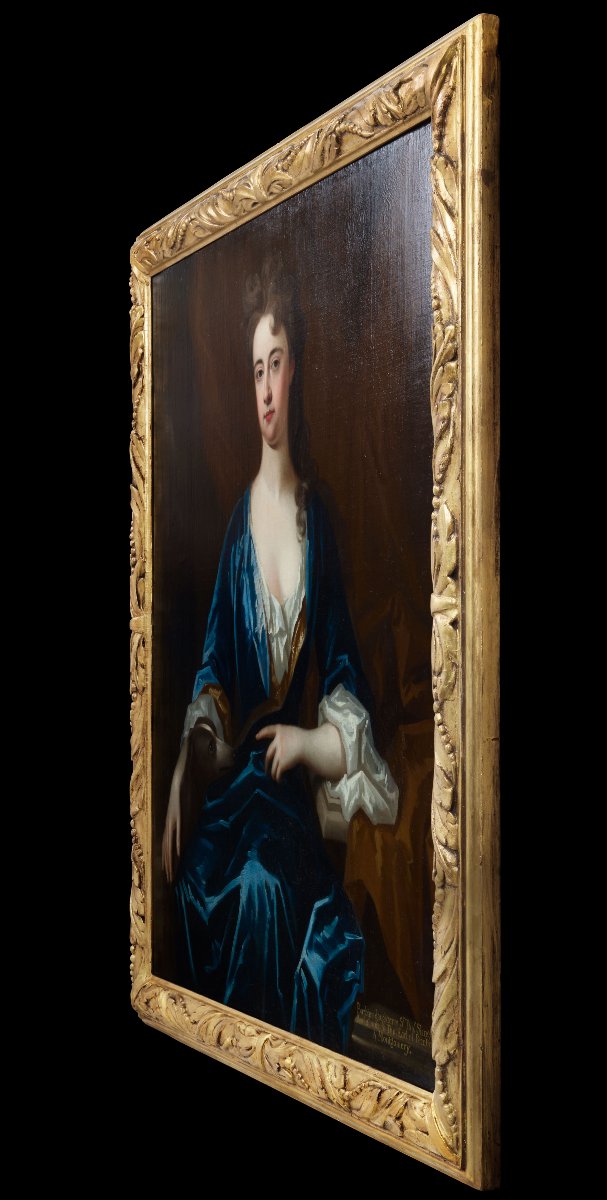
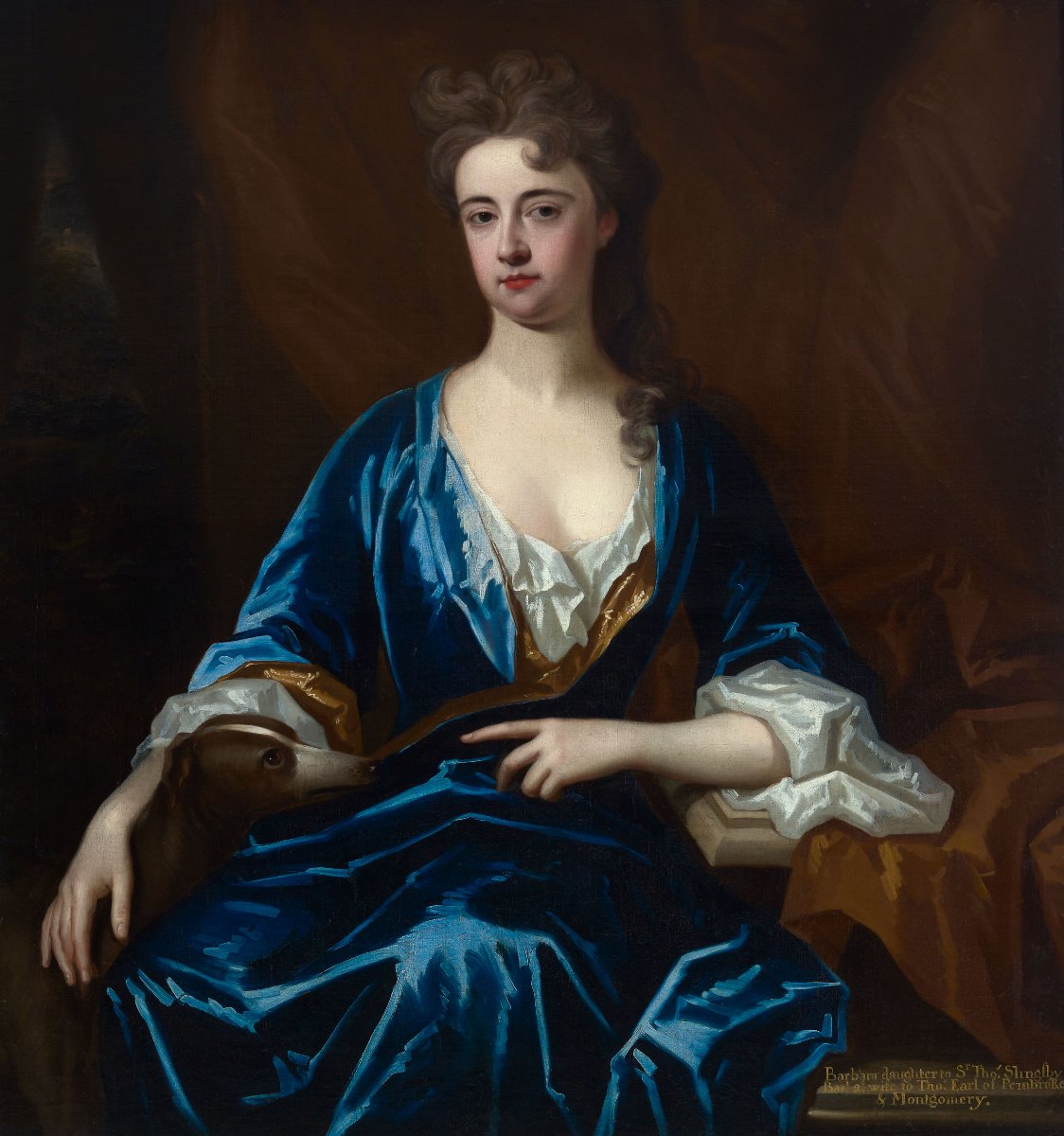
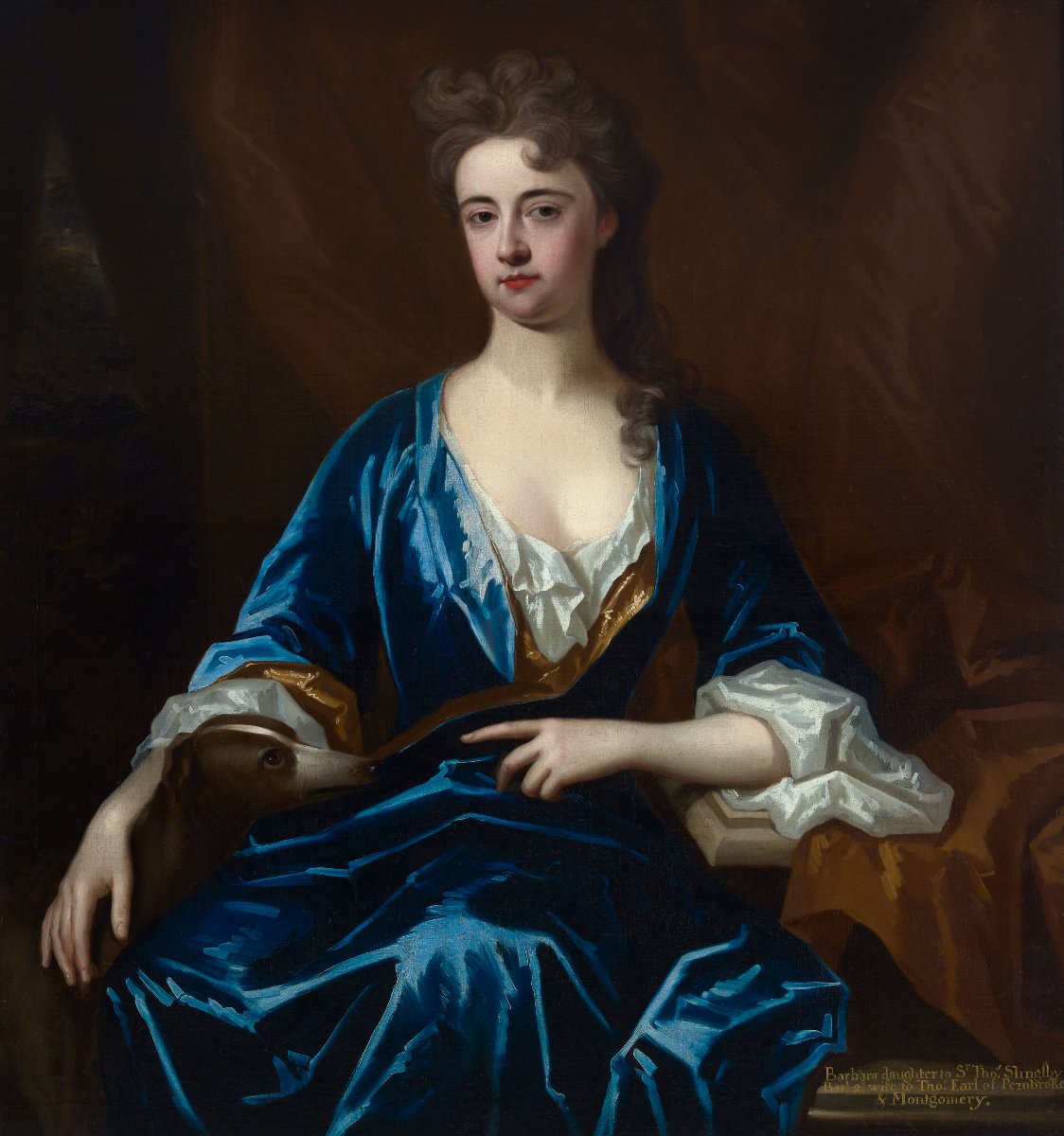
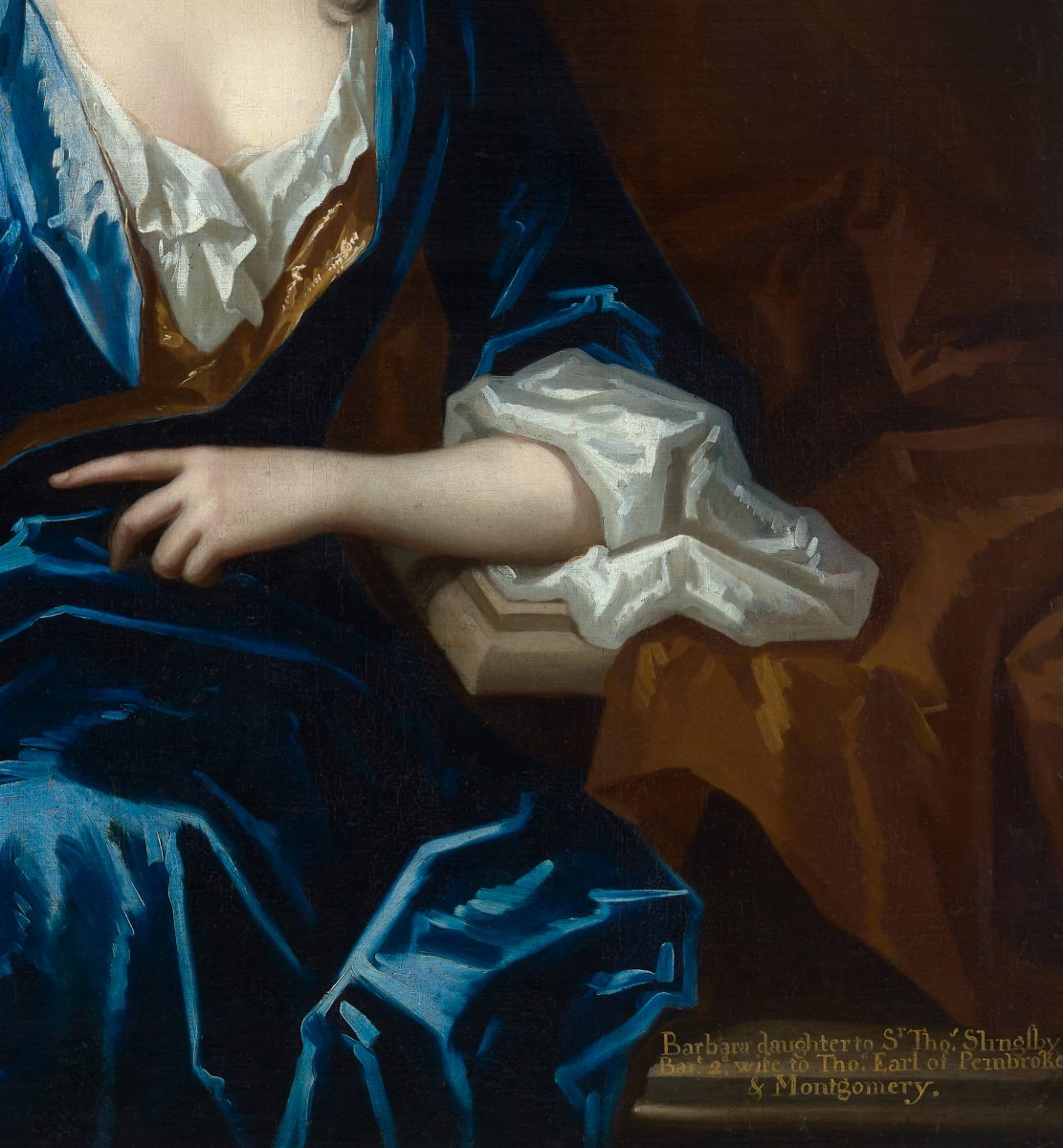
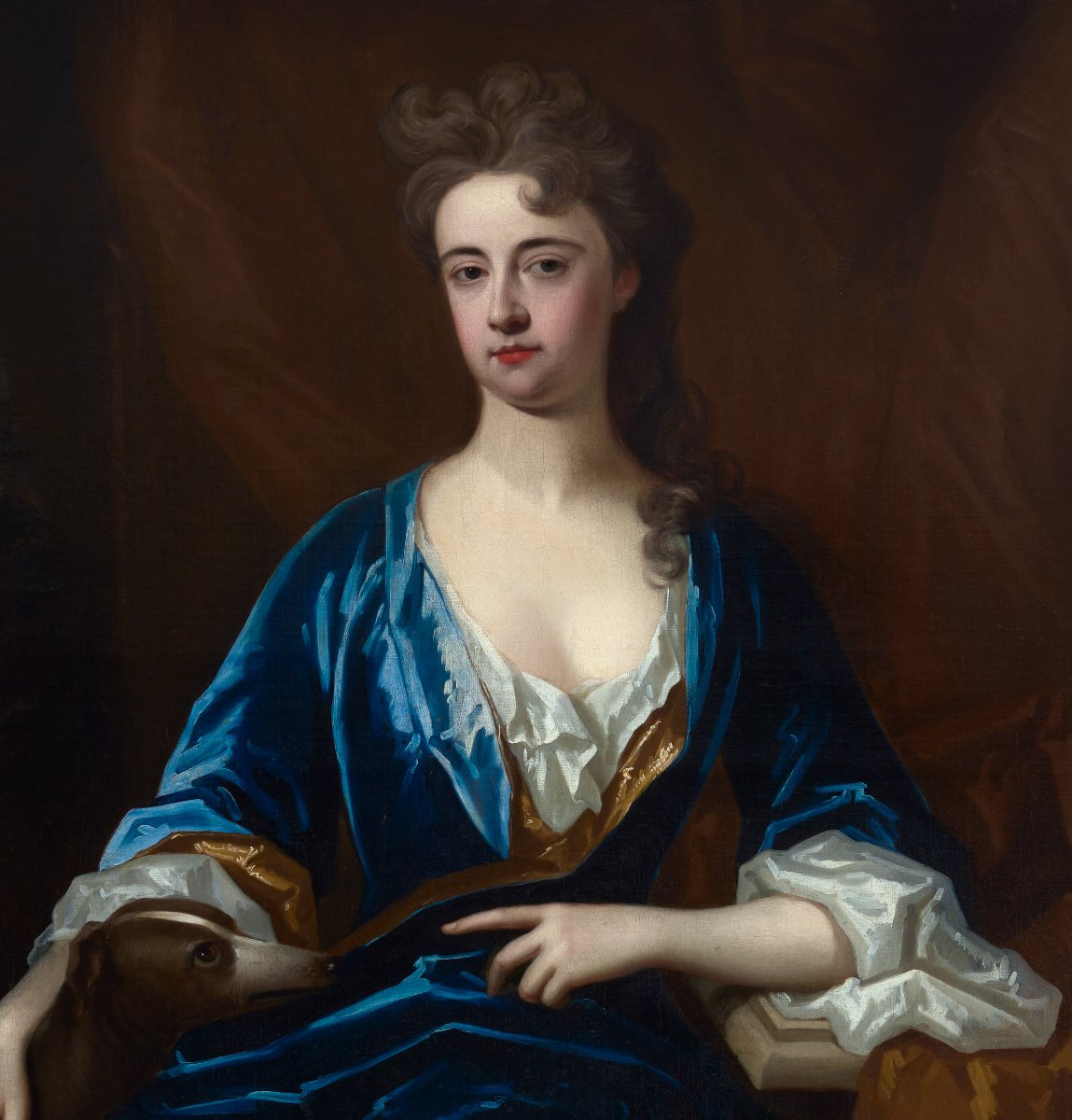
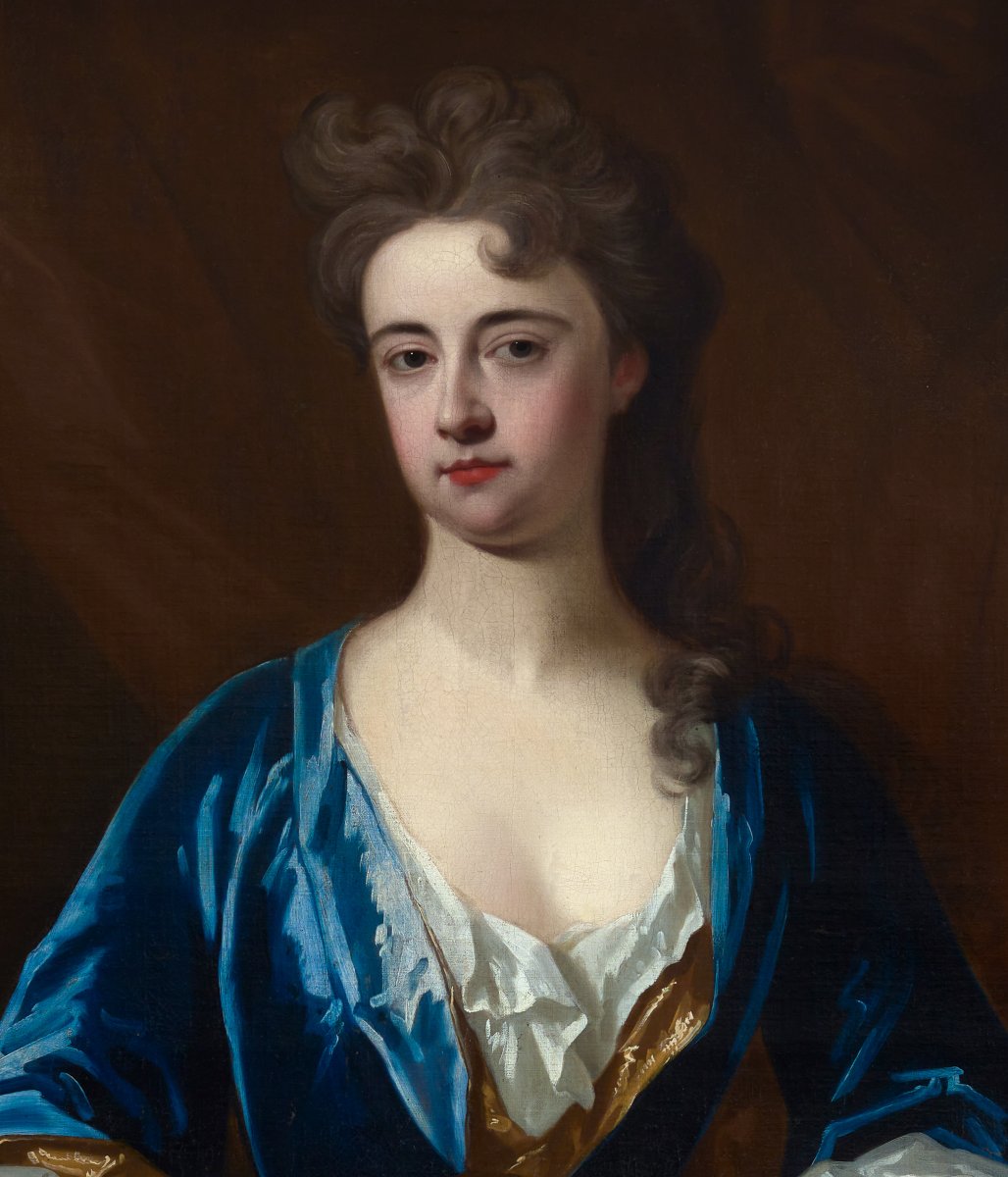
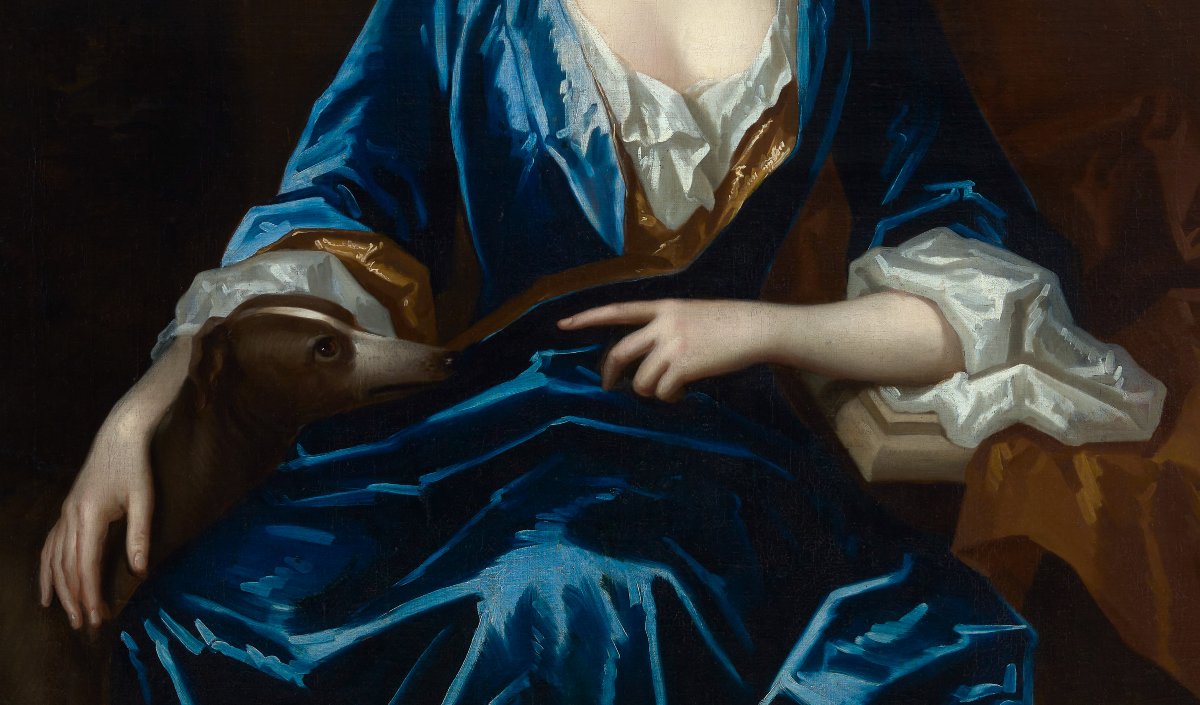
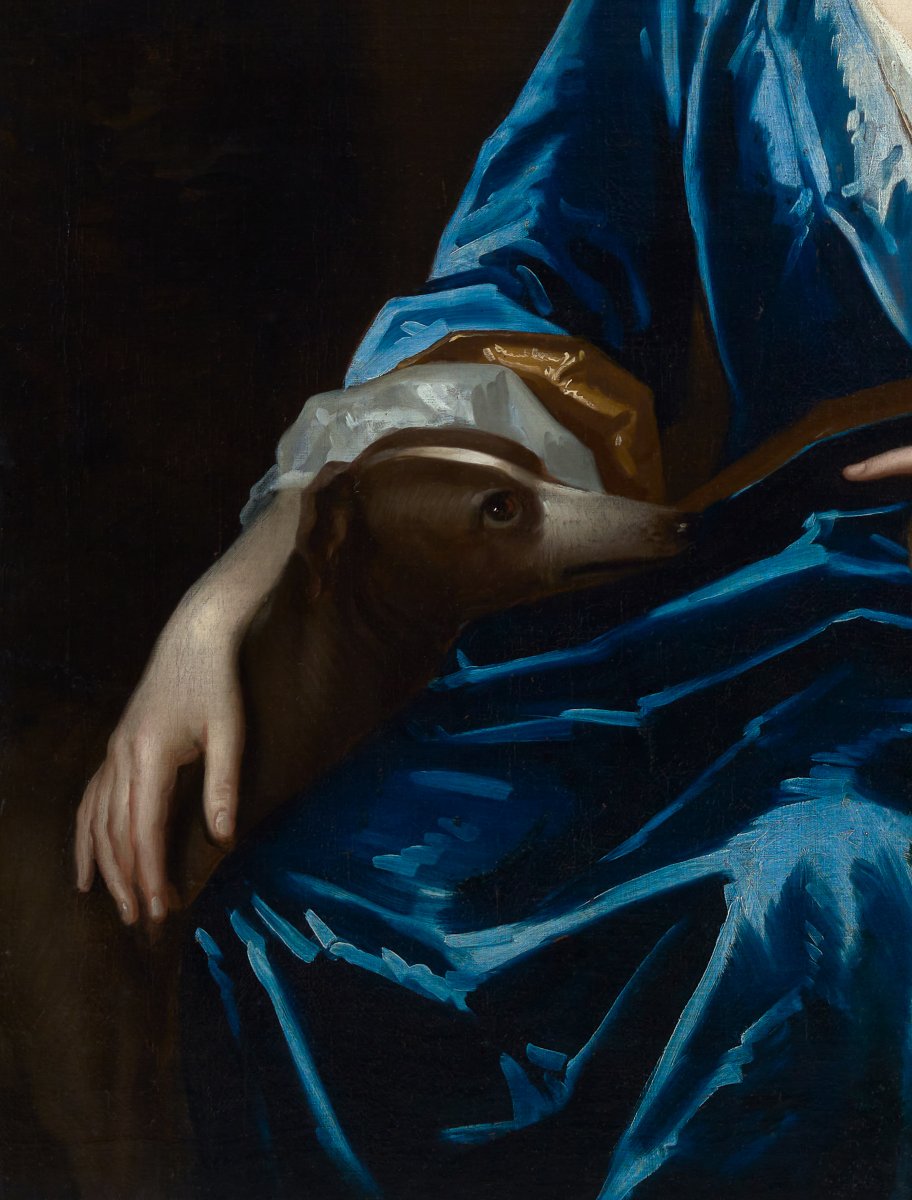
















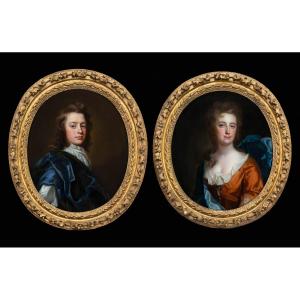
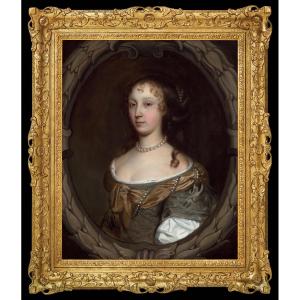
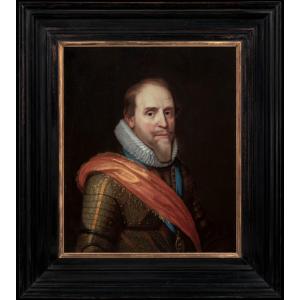
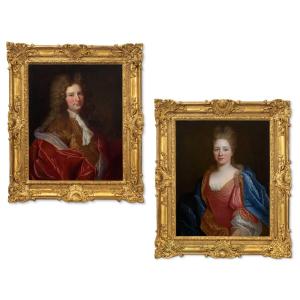

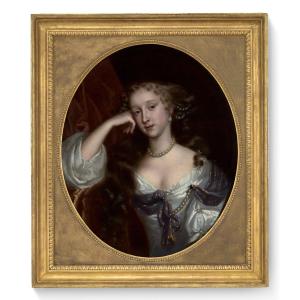
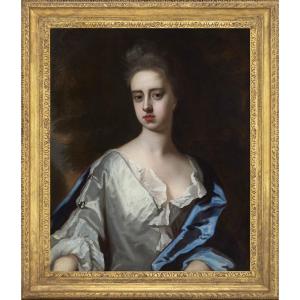



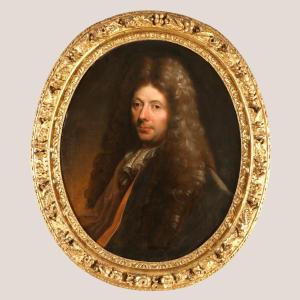




 Le Magazine de PROANTIC
Le Magazine de PROANTIC TRÉSORS Magazine
TRÉSORS Magazine Rivista Artiquariato
Rivista Artiquariato